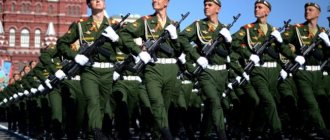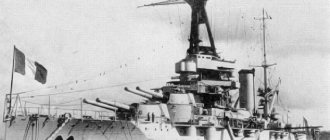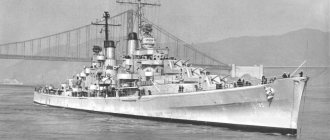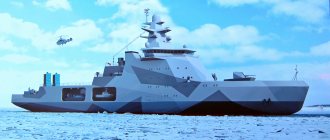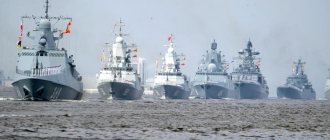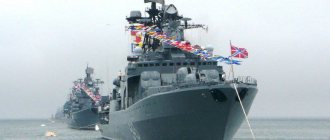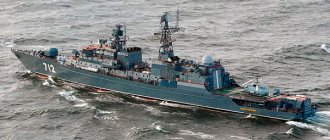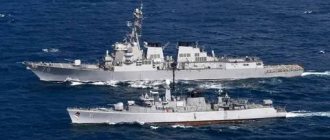History of the Spanish Navy
The prerequisites for the first regular Spanish navy appeared at the beginning of the thirteenth century. At that time, the territory of modern Spain was under the control of 2 Spanish and 1 Arab states.
Habsburg Era
The Habsburg Era is the moment of the unification of two Spanish states (Aragon and Castile), resulting in two powerful fleets coming under the command of one. The beginning of this era comes in the middle of the fifteenth century. The fifteenth century is the century of the discovery of the "New World" - a world that gave rise to intercontinental trade and colonization.
The Spanish Armada played a vital role in these achievements for their country. The first discoveries, the first conquests and the first colonies were achieved by sailors. After the discovery of America, the Spaniards conquered Cuba, Peru and Mexico. After success in the new part of the world, the Spanish Armada continued its journey to India, after which it established the Spanish East Indian Colony there.
In the sixteenth century, the Ottoman Empire appeared on the path of Spain, which seriously reduced Spain's influence in the Mediterranean. Moreover, in the second half of the same century, the development of the Dutch fleet was reflected in Spanish expansion.
The Habsburg era continued until the end of the seventeenth century. During this period of time, the Spanish Navy went through both ups and downs, but still maintained its position as one of the leaders in terms of naval forces.
Barbunov Era
After the last representative of the Habsburg family was killed, the Barbun family came to the throne of Spain, under which there was a clear decline in the power of the Spanish Armada. The period of Barmud rule lasted until the mid-nineteenth century.
The reign of the Barbuns began with a black streak for them - Spain lost Sicily, Sardinia, Gibraltar, many islands in the Atlantic Ocean and in India. Moreover, due to the rise of Great Britain and France, Spain tried to support their colonies in America against them. However, due to the fact that Spain itself began to lose colonies in America, the task was not completed.
Although Spain had a fairly large navy, its fleet was converted from merchant ships and was more suitable for patrolling than for direct combat contact with the enemy.
Nineteenth Century
The nineteenth century is a disastrous century for the Spanish Navy. The most important reason for this is the Naval Battle of Trafalgar, where the combined naval groups of Spain and France were completely defeated by the Royal British Navy. The main hero of that battle is Admiral Nelson, who, with his brilliant skills, was able to sink more than 70% of the combined fleet.
Due to the loss of most of the colonies in America and the loss at Trafalgar, after much discussion, the government of the Spanish Empire decided that they no longer needed to maintain such a large fleet. This decision finally knocked the Spanish Armada out of the top list of the most powerful fleets of that time.
Twentieth Century - Civil War Fleet 1936-1939.
The neutrality of Spain during the First World War is one of the direct reasons that at the time of the Civil War organized by Franco, the Spanish Navy had a fairly strong fleet. On account of the Spanish Armada were:
- 2 Battleship units;
- 7 units of Cruisers;
- 17 units of Destroyers;
- 8 Destroyers;
- 17 submarines.
Spain also did not take part in World War II.
Emblem of the Spanish Navy
The rise of the fascists to power in Spain
At the beginning of the twentieth century, Spain was experiencing a protracted crisis. In order to get out of it, the government had to overcome feudal remnants, introduce democratic orders and carry out reforms aimed at improving the situation of workers and peasants. Since the Spanish king and his ministers did not make concessions to the population, radical left and right groups appeared in the state. Over two decades, radicals carried out several coups d'etat, during which the monarchy fell. In 1936, a bloc of communist and socialist parties won the parliamentary elections, which caused indignation among nationalist military circles. The military decided on another coup, in which the Phalanx, a fascist organization created in 1933, played a key role. The rebellion escalated into a three-year civil war, at the end of which the fascists, led by General Francisco Franco, came to power in Spain.
All this time, Hitler provided active support to the Spanish fascists, supplying weapons and military specialists to Spain.
Current state of the fleet
Spain is one of the few countries that has good shipbuilding resources. Firstly, the country has several large shipyards. Secondly, most of the country's naval equipment is domestically produced. Moreover, Spain not only uses its own naval equipment, but also actively markets its goods abroad. The main buyers of Spanish naval equipment are the countries of Latin America and the Indian basin.
However, it should be noted that in connection with the crisis in the country, the government of the country adopted a declaration to narrow the country’s budget. One of the main types of budget narrowing was the country's army, namely the country's Navy. Thus, the country sold or wrote off a huge amount of military naval equipment. For example, in 2013, the light aircraft carrier Principe De Asurios, which entered service with the navy in 1988, was decommissioned. It should be noted that the aircraft carrier served only 25 less than full years - this is a very short service life for ships of this type. The next ships that are being prepared for decommissioning are the F-80 class frigates, which also have an average service age of just over 28 years. Thus, we can say that despite its shipbuilding prospects, Spain is not a super-maritime power. The main reason for this is the crisis in the country, which has been going on for more than 10 years.
Cruisers | Spain
Heavy cruiser Canarias
The cruiser was built at the El Ferrol shipyard and put into service in 1936, and decommissioned in 1975. Performance characteristics of the ship: standard displacement - 10.6 thousand tons, total displacement - 13.1 thousand tons; length – 183 m; width – 19.5 m; draft – 6.2 m; speed - 33 knots; power plants - 4 steam turbine units and 8 steam boilers; power – 90 thousand hp; fuel reserve – 2.6 thousand tons. oil; cruising range - 8 thousand miles; crew - 780 people. Reservation: belt – 51 – 38 mm; cellars - 102 mm; towers - 25 mm; deck – 25 – 37 mm; cutting – 25 mm. Armament: 4x2 - 203 mm guns; 8x1 – 120 mm guns; 2x1 – 57 mm guns; 4x1 – 40 mm anti-aircraft guns; 2x2 – 37-mm anti-aircraft guns, 4x1 – 20-mm anti-aircraft guns, 2 – airborne bomb launchers, bomb releaser.
Light cruiser Navarra
The cruiser "Reina Victoria Eugenia" was put into service in 1923. In 1931 it was renamed "Republica". In 1937-1938 underwent modernization and received the name “Navarra”. From 1941 she served as a training ship, and in 1955 she was decommissioned. Performance characteristics of the ship: displacement - standard 5.7 thousand tons, full displacement - 6.5 thousand tons; length – 134 m, width – 15 m; draft – 4.8 m; speed – 25 knots; power plants - 2 steam turbine units and 8 steam boilers; power – 25.5 thousand hp; fuel reserve – 1.2 thousand tons. oil; cruising range - 4 thousand miles; crew – 400 people. Reservations: belt - 50 - 31 mm, cellars - 102 mm, towers - 25 mm, deck - 38 mm, deckhouse - 25 mm. Armament: 6x1 – 152 mm guns, 4x1 – 88 mm guns, 4x1 – 20 mm anti-aircraft guns.
Light cruiser Mendez Nunes
The cruiser "Mendez Nunes" from the series of the same name was put into service in 1925. In 1939, the ship was disarmed and throughout 1943-1947. underwent modernization and conversion into an air defense cruiser. In 1963, the ship was decommissioned. Performance characteristics of the ship: standard displacement - 4.9 thousand tons, full displacement - 6 thousand tons; length – 134 m, width – 14 m; draft – 4.8 m; speed - 29 knots; power plants - 4 steam turbine units and 12 steam boilers; power – 45 thousand hp; fuel reserve – 0.7 thousand tons. oil and 0.8 thousand tons of coal; cruising range - 5 thousand miles; crew - 340 people. Armor: belt – 76 mm; extremities – 38-25 mm; deck – 25 mm; cutting – 150 mm. Armament: 6x1 - 152 mm guns; 4x1 – 47-mm anti-aircraft guns, 4x3 – 533-mm torpedo tubes.
Light cruiser "Galicia" ("Principe Alfonso", "Libertad")
Light cruiser Almirante Cervera
Light cruiser Miguel de Cervantes
The light cruisers of the Principe Alfonso class were built at the El Ferrol shipyard and consisted of 3 units (Galicia, Almirante Cervera, Miguel de Cervantes).
Principe Alfonso was commissioned in 1925. She was renamed Libertad in 1931 and Galicia in 1939. The cruisers Almirante Cervera and Miguel de Cervantes were commissioned in 1927 and 1930. respectively. In 1940 – 1944 "Galicia", and "Miguel de Cervantes" in 1940-1946. underwent modernization. The ships were decommissioned in 1970, 1965 and 1964, respectively. Performance characteristics of the ship: standard displacement - 7.5 thousand tons; full – 9.2 thousand tons; length – 166 m, width – 16 m; draft – 6 m; speed - 33 knots; power plants - 4 steam turbine units and 8 steam boilers; power – 80 thousand hp; fuel reserve – 1.7 thousand tons. oil; cruising range - 5 thousand miles; crew - 560 people. Armor: belt – 76 mm; extremities – 50 – 25 mm; deck – 25 – 50 mm; wheelhouse - 152 mm, gun shields - 12.7 mm. Armament of the Almirante Cervera: 3x2 and 2x1 - 152 mm guns; 4x1 - 105 mm guns, 4x1 - 20 mm anti-aircraft guns, 4x3 - 533 mm torpedo tubes. Armament "Galicia", "Miguel de Cervantes"): 4x2 - 152 mm guns, 8x2 - 37 mm anti-aircraft guns, 5x4 - 20 mm anti-aircraft guns, 4x3 - 533 mm torpedo tubes, catapult and seaplane ("Miguel de Cervantes") Cervantes"). Share to:
"Swiss knife" of the fleet
According to the most common version, after the operation to force Georgia to peace in August 2008, the need was realized for the rapid transfer of expeditionary forces of the Marine Corps, and, possibly, to theaters much more remote than Georgia. The experience of the French using their Mistrals during operations in Libya in 2011 and in Mali in 2013 showed that these ships are well suited for such tasks. Finally, the need for large modern landing ships was demonstrated in 2012 by the “Syrian Express”, in which Russia, for lack of anything else, used large landing ships (LHDs) of Project 775, built in Poland, built in the 1980s, and even older BDKs of Project 1171.
In the term “universal landing ship,” the epithet “universal” is no less important than “landing ship.” In fact, the UDC, in particular the Mistral, combines the functions of a large landing ship in the ocean zone, a control ship and a floating hospital.
There is a postulate in military science: it’s not intentions that matter, it’s capabilities that matter. And the Mistrals give the Russian fleet capabilities that it did not have before. The Navy really needs a ship to control a diverse group at a considerable distance from the coast of Russia for a long time, especially after the decision to create a permanent squadron in the Mediterranean Sea. The Mistral is perfect for this. Admiral Vladimir Vysotsky, commander-in-chief of the Russian Navy in 2007-2012, noted, first of all, the potential of the Mistral as a command ship capable of providing headquarters with complete information about the situation in vast theaters of military operations in real time.
On the Mistral, all conditions have been created for the operation of the formation headquarters, and there will be no conflict for jobs in the main command post, computing power and communication channels with the combat crew of the ship itself, as happens now. The headquarters, especially at a high level, on board a warship greatly limits the possibilities of its use for its intended purpose. By the way, it is the full-fledged work of the formation headquarters that American sailors consider an important advantage of Ticonderoga-class cruisers over Arleigh Burke-class destroyers.
Unloading armored vehicles from the Dixmude UDC of the French Navy in the port of Dakar
Photo: Mamadou Toure Behan / AFP
Don’t forget about the docking chamber, which can accommodate, for example, two large EDA-R landing catamarans, as well as a flight deck with six take-off and landing positions and an air group of up to 16 helicopters. The helicopter is a truly universal instrument of the fleet and, depending on the composition of the air group, the Mistral can solve various tasks - from search and rescue to anti-submarine - and provide direct support for the landing force (for which, in fact, the naval modification of the famous Ka-52 Alligator is created ").
Thanks to the air group and the ability to deploy a large hospital on board, Mistral could also become an element of Russia’s “soft power”, participating in joint humanitarian operations with the Ministry of Emergency Situations to help countries affected by natural disasters and other emergencies. Finally, we should not forget about the ability to evacuate a significant number of Russian citizens from crisis regions, especially where the use of EMERCOM aircraft is impossible or unsafe.
Systems approach
During the Soviet era, the absolute priority of naval construction was preparation for a large-scale and, quite likely, nuclear war with the United States and NATO. This implied an emphasis on the development of the naval component of the strategic nuclear forces (NSNF), the fight against the potential enemy's strategic nuclear forces and its aircraft carrier formations.
After the collapse of the USSR, the picture of the world changed, which required a corresponding rethinking of the concept of the Russian fleet. “Peacetime” tasks came to the fore: the fight against “irregular threats” (piracy, international terrorism, etc.), participation in peacekeeping and humanitarian operations, low-intensity conflicts, naval diplomacy and flag display.
Some weaknesses of the Navy in the ocean zone, which were previously neglected, have been revealed: ensuring the long-term presence of marine forces with equipment, including helicopters, far from the borders of Russia, managing heterogeneous groups, as well as transporting cargo and people by warships over considerable distances.
At the French naval exhibition Euronaval at the end of October 2008, the Commander-in-Chief of the Navy, Admiral Vladimir Vysotsky, showed genuine interest in the Mistral-class UDC. What attracted Russian sailors to this ship?

